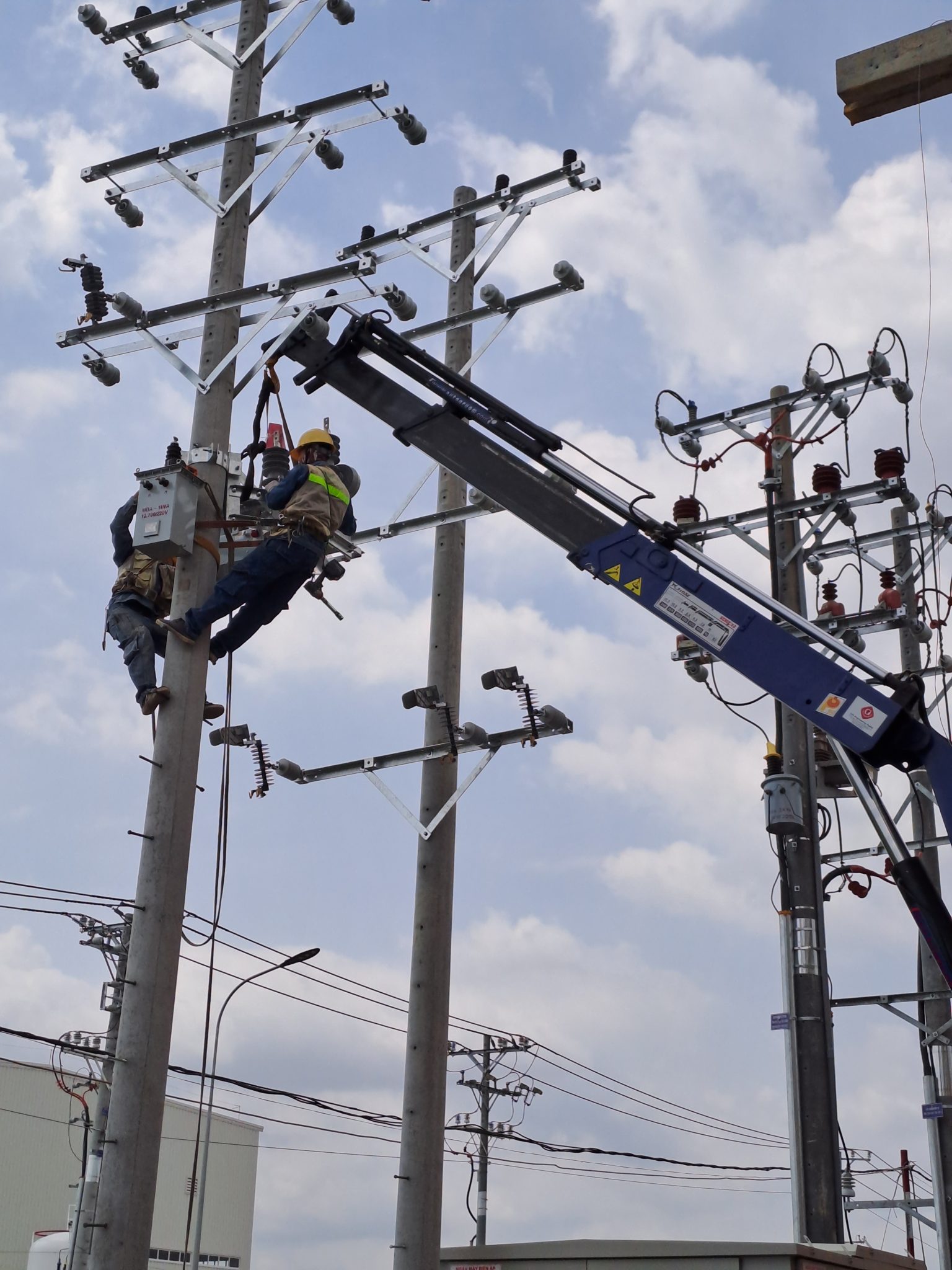Learn about the various factors influencing MEP contractor pricing, including pricing methods and market fluctuations.
Factors Affecting MEP Contractor Pricing
The most critical aspect in MEP contractor pricing involves costs associated with materials, labor, and technology application. Labor and material costs may vary based on location and specific timeframes. A thorough project survey ensures precise technical requirements, directly impacting pricing.
Comprehensive evaluation is necessary for MEP projects to determine and control costs effectively. Essential factors include contractor experience and capabilities. Evaluating the electrical workforce’s skill levels—from skilled workers to seasoned design engineers—plays a crucial role in assuring project quality and efficiency.
Reliability and legal status of the contractor are also essential. Contractors must possess necessary legal documentation and robust financial stability for smooth project execution.
Regarding execution timelines and pricing, adhering to project deadlines helps avoid unforeseen expenses. Choosing the right pricing and quality industrial materials can significantly affect total costs.
Geographical location and logistics can impact transportation costs and infrastructure access, influencing both the project’s timeframe and overall costs. These considerations are essential when assessing electrical costs for each specific project.
Applied MEP technologies may demand special materials or advanced technology, affecting and increasing total contractor expenses. High-quality and safety standards generally require additional material and technology investments, directly impacting construction costs.
Finally, detailed technical drawings are crucial during the project execution process. These drawings ensure accuracy and support assembly and inspection phases, establishing a strong foundation for each project stage.

Pricing Methods and Execution Contracts
To provide accurate MEP contractor pricing, the contractor must implement optimal pricing methodologies, including detailed analysis of each category and referencing previous estimates. Execution contracts should clearly outline terms related to schedules, quality standards, and rights of all parties involved.
Pricing methods and execution contracts are crucial for transparency and effectiveness in managing construction projects. These are thoroughly regulated through governmental documents and circulars significantly impacting pricing and contract adjustments.
Execution contract pricing, as the cost owners commit to paying contractors, must incorporate all expenses including materials, labor, machinery, general costs, and taxes. The most prevalent form is the fixed-price contract, where prices remain unchanged except for force majeure or scope changes. Alternatively, fixed or adjustable unit prices may apply per project agreement.
Fixed-price contracts remain a key focus. They ensure financial stability for projects; however, clear agreements are critical to avoid legal issues or unexpected expenses.
Pricing methods and contract price adjustments form a systematic process. The use of price adjustment coefficients is widely adopted. According to Circular No. 07/2016/TT-BXD, transparent calculation formulas allow flexible price adjustments based on market fluctuations in materials, labor, and machinery. This enables both contractors and investors to manage financial risks effectively, ensuring project progress and quality.
Execution contracts should be detailed, including comprehensive details about volume, quality, execution timelines, and terms for payments and advances. Legal conditions must clearly define rights and responsibilities of each party, handling incidents and price adjustments to protect legal rights and ensure accountability.
In today’s competitive construction environment in Vietnam, the application of precise pricing methods and effective execution contracting is critical to project success.

Technical Factors and Market Changes
Technical aspects like new technologies, construction standards, and specific project requirements impact MEP contractor pricing. Market fluctuations due to supply and demand can also affect labor and material costs.
In any market, including stock and energy markets, understanding technical factors and market changes is essential. Business leaders, in particular, must grasp principles and technical analysis tools to make informed decisions. Below is how technical analysis and forecasting are used.
Charts and Candlestick Patterns
Foundational in technical analysis, charts and candlestick patterns aid investors in tracking and predicting trends. Notable patterns like “Hammer” and “Morning Star” signal optimistic reversals, especially when accompanied by high trading volume.
Trading Volume
Trading volume reveals market interest and cash flow support. Increasing volume often accompanies stock price rises, while declining volume with rising prices may indicate lost growth momentum.
Trend Lines
An indispensable tool, trend lines help identify resistance and support levels. An upward trend signals buying opportunities, while a downward trend suggests selling. Trend line reliability increases with more touchpoints.
Moving Averages (MA)
MA aids in determining trends through average stock prices over a period. MA fluctuations create significant support and resistance levels, guiding investment strategy.
MACD (Moving Average Convergence Divergence)
This indicator not only identifies trends but also detects reversal signals. MACD crossing the signal line may indicate a new trend, providing cues for trades.
Bollinger Bands
With three main lines, Bollinger Bands determine volatility and price trends. Price in the lower band often suggests a downturn, while the upper band indicates an uptrend.
When effectively analyzed and combined, these technical elements offer significant value in understanding and controlling market fluctuations, optimizing investment decisions.

Understanding influential factors and pricing methods aids in optimizing project costs, safeguarding party interests, and enhancing MEP investment strategy effectiveness.
Contact QuangAnhcons via Hotline: +84 9 1975 8191 for further information and detailed support about MEP contractor pricing.
QuangAnhcons offers reliable MEP consulting and execution services, with a professional technical team ready to assist from project survey to implementation.
[contact-form-7 id="7239967" title="Contact form 1"]


Related Posts
Tay Ninh Solar Power Planning: Technical Framework, Grid Interconnection, and Rollout Roadmap
Technical overview of solar planning in Tay Ninh: irradiation, grid capacity, permitting, design, operations, and [...]
Dec
Binh Duong Solar Planning: Regulatory Framework, Grid Interconnection, and an Implementation Roadmap for Factories and Industrial Parks
An overview of Binh Duong solar planning: legal framework, interconnection, design, risk management, and an [...]
Dec
Solar Farm Repair: O&M Workflow, IV Curve Diagnostics, Thermography, Inverter Service and Utility-Scale Safety
A utility-scale solar farm repair plan centered on O&M, IV curves, thermal imaging, inverter service, [...]
Dec
Dong Nai Solar Power Plan 2023–2025: Tri An 1,029 MW, Grid Upgrades and the DPPA Pathway
A complete look at Dong Nai’s solar power plan: Tri An 1,029 MW, irradiation potential, [...]
Nov
Quang Ngai Solar Power Plan 2024–2030: Legal Framework, Irradiance Potential, and Development Roadmap
A complete look at Quang Ngai’s solar power plan: capacity targets, irradiance (PVout), development zones, [...]
Nov
Solar Damage Assessment Services: On-Site Procedures, EL/IV/Thermography Testing & Compliance with Standards
Discover IEC/UL/NEC standard solar damage assessment processes: on-site evaluation, EL and IV curve testing, thermal [...]
Nov
Comprehensive Package Estimate for a 1800MVA 500kV Substation: Scope, Configuration 3x600MVA, Standards and Timeline Management
An overview of the 1800MVA 500kV substation estimate: construction scope, configuration 3x600MVA, GIS/AIS, SCADA, standards, [...]
Nov
Factory Electrical Systems: Comprehensive Design and Implementation Guide
Discover the detailed and safe process of factory electrical systems design and implementation. [...]
Oct
Blueprints Required for Factory Construction Permits
Discover the necessary blueprints in factory construction permit applications, from floor plans to electrical and [...]
Oct
What Are the Requirements for a Factory Construction Permit? A Comprehensive Guide
Explore the documentation and steps needed to secure a factory construction permit for streamlined project [...]
Oct
Factory Construction Permit Procedures in Vietnam: Essential Guidelines and Documents
Learn the procedures for securing a factory construction permit in Vietnam, focusing on document preparation [...]
Oct
Key Steps in the Factory Construction Process
Discover the essential steps and requirements for building factories. [...]
Oct
Comprehensive Electrical Substation Solutions by Quanganhcons
Discover the cutting-edge electrical substation solutions offered by Quanganhcons for industrial applications. [...]
Oct
Investment Costs for a 1MWp Solar Power System and Influencing Factors
Explore the investment costs for a 1MWp solar power system in Vietnam and the influencing [...]
Sep
QuangAnhcons: Elevating Wind Energy Solutions
Explore QuangAnhcons' leadership in wind energy and renewable solutions in Vietnam. [...]
Sep
Electrical Contractor Strategies at Becamex Industrial Park
Discover the strategic advancements and partnerships of the electrical contractor at Becamex Industrial Park. [...]
Sep
Investment Insights for 1MW Wind Energy in Vietnam: Costs and Opportunities
Discover the detailed analysis of costs and opportunities for investing in 1MW wind energy projects [...]
Sep
Advanced Electrical Installation Solutions by QuangAnhcons
Explore advanced electrical installation solutions and modern technology with QuangAnhcons. [...]
Sep
Enhancing Industrial Electrical Services with Quanganhcons
Discover Quanganhcons' expertise in industrial electrical services, offering efficient and sustainable power systems. [...]
Sep
Comprehensive MEP Solutions by QuangAnhcons: From Design to Maintenance Excellence
Discover optimal MEP solutions with QuangAnhcons, dedicated to excellence from design through maintenance. [...]
Sep